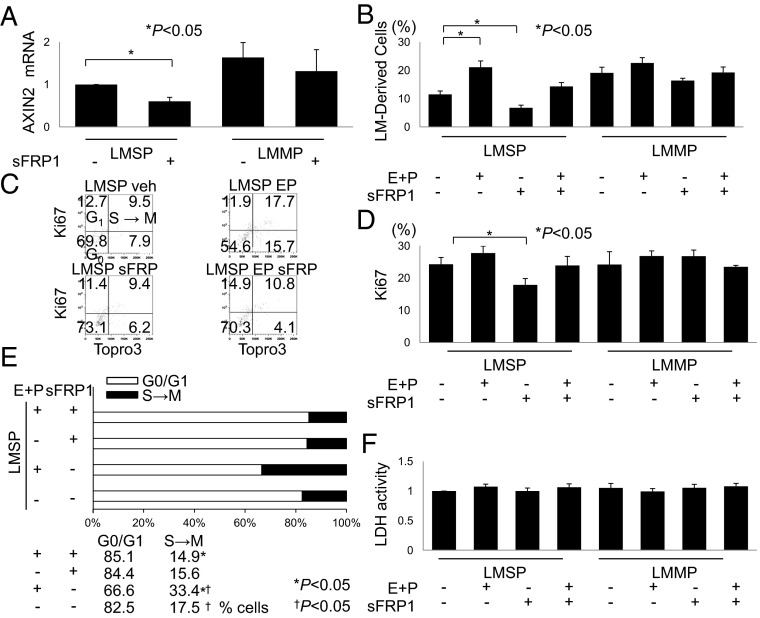Fig. 3.
Inhibition of WNT signaling suppresses and E+P enhances the growth of LMSP cells cocultured with MM cells. (A) Effect of WNT signaling inhibition on LMSP-MM cocultured cells was determined by quantitative PCR of the WNT target gene AXIN2. Cells were seeded for mixed coculture as described previously and were treated with vehicle or sFRP1 (10 μg/mL) for 7 d. (B) Percentages of LMSP and LMMP cells among total cells were counted using PKH-26 dye and flow cytometry. Cells were seeded for mixed coculture and subjected to treatment with vehicle, 10−7 mol/L E+P, or sFRP1 (10 μg/mL) either alone or in combination with E+P (10−7 mol/L) for 7 d. Data are reported as the means ± SD. *P < 0.05. (C–E) Cell-cycle analyses of LMSP and LMMP cells were performed using flow cytometry with the Ki-67 proliferation marker and DNA-specific labeling with the TO-PRO III fluorochrome. The percentages of positive or negative cells for both markers are indicated in each quadrant of the dot plots. The percentage of cells positive for the Ki-67 antigen was decreased after incubation with the WNT blocker sFRP1. Incubation with E+P increased the percentage of cells at the S→M phase compared with vehicle treatment, whereas incubation with E+P and sFRP did not increase the percentage of S→M phase cells. n = 3. *P < 0.05; †P < 0.05. (F) LDH cell-viability assay. LMSP and LMMP cells were cultured with or without E+P and/or sFRP1 for 72 h, and media were assessed for LDH activity as described in SI Materials and Methods. Neither E+P treatment nor inhibition of WNT/β-catenin signaling promoted cell death. Results are expressed as levels of LDH activity (mean ± SD) from five independent experiments.

